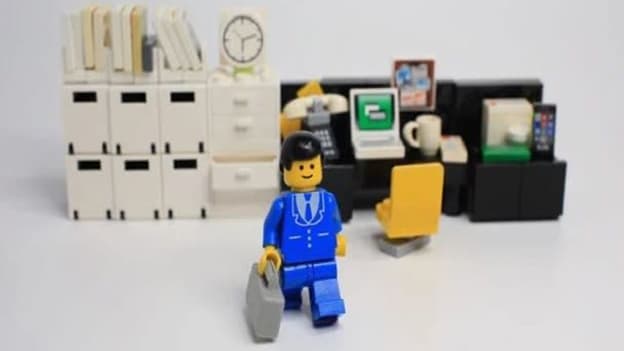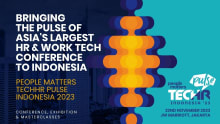From Disruption to Renewal: HR’s COVID-19 journey

Every 400 years, the legendary Phoenix Bird rises high in the sky and then circles the heaven a few times. It is said that during this circling the sky, the bird is torn between it’s yearning to hurtle into the flame and the fear of facing its own end. It finally decides on what it is destined for – Renewal. It plunges itself into the eternal fire, only to rise again in a new, renewed Avtar and to live for another four hundred years.
I was reminded about this story in the context of the challenges HR is facing during the COVID-19-19 crisis. Plunging into the unknown crisis, not being certain about how to cope with uncertainty and without any precedents to fall back upon. Many HR and Business Leaders, suddenly seemed to have frozen in their track - unable to move, unable to think of options and letting fate take its course…. similar to a stray deer in front of a car headlight on a highway.
For these leaders, relying on past experience was futile as no current situation is ever exactly like a past situation. Secondly, relying on past experiences prevents one from receiving anything new. It is said that the native Indians in the Americas could not even see Columbus’s ships because there was nothing in their experience that matched the idea of there being such big boats on the ocean. COVID-19 was one such big ship on our horizon.
Anytime we rely on our past experiences, we limit what can show up to only that which has already shown up in our past. Dealing with COVID-19 crisis, therefore, called for a fresh approach, devoid of precedents. Many established, even experienced leaders failed to satisfactorily meet this challenge, much to their own surprise, not to mention dismay. Senior, experienced and oft-acclaimed leaders were faced with what Kavi Arasu calls “Solomon Paradox” – King Solomon was very wise and wealthy, he was sought after for advice. But when it came to his own life , he was a miserable failure. This raised an enigma – can such leaders take their own advice? During COVID-19 crisis this paradox became all the more glaring.
I do not wish to indulge in arm-chair criticism or judgment of those dealing with crisis. I would therefore like to share my perspective about the challenges and opportunities that the COVID-19 Crisis presents to the HR fraternity.
Faced with any crisis, our first and instantaneous response is to ‘steady the boat’ and ‘immediate damage Control’. I however, have a contrarian view…. I am of the opinion that during such a major disruption, HR should create MORE disruptions. And I say this with all seriousness. The rationale is that during disruption there is often no option but to change. Change is no more seen as a one-off situation but something that will stay for long. Additional disruption becomes part of the evolving situation and resistance to change is therefore, minimalized. Attention is diverted from routine business activities, which actually frees up time to think Future, to think of Strategy. It is also observed that at such times, creativity flows spontaneously. Desperate problems call for desperate solutions and that gives rise to a higher level of adaptableness. All this bodes well for innovativeness and ingenuity. Both most needed to deal with crisis of COVID-19 magnitude.
My submission is to adopt a fresh M-B-A formula for HR fraternity. Let me explain:
M = Maintain what is Core
B = Break Ruthlessly, Recreate
A = Align afresh with Business
M = Maintain what is Core
In such critical times, while one is struggling to simply keep ‘head above the water’, HR must focus on ensuring that Organization’s Core Values and Beliefs are not compromised for mere short-term gains. And that Ethical standard, Reputation and Engagement - not only with internal employees but also with external stakeholders like Campus, Vendors, HR Service providers - are given highest priority.
Deloitte’s February 2020 Survey indicates that a whopping 86% of respondents – particularly young professionals – favour career with Value-Driven organizations. Profit and Monetary gains are much lower in preferred qualities. Adequately highlighting which type of organizations will be a beacon for high quality talent in the future.
B = Break Ruthlessly, Recreate
COVID-19 crisis has literally pressed the ‘Pause Button’ for most HR activities. This is the juncture to critically review all HR Policies, Practices, Layers, Structures, and Hierarchy and challenge status quo. Ruthlessly and boldly discard and discontinue some of these practices that have outlived its utility and relevance.
This is not going to be an easy task – we in HR get enamoured by many of our creations because it has earned us accolades and seems like indispensable part of our ethos. Breaking and discarding ruthlessly however, provides incredible opportunity to create something much better and more relevant.
Have we paused to ask – Why Annual Appraisal? Why not Quarterly? Why Annual Increment? Why not quarterly Incentive? Why Increment at all? Why not Profit Sharing? If the organization does well this Quarter all gain, if not - better luck next quarter. We need to wean away from attitude of Entitlement to attitude of Earning. Organizational survival should be the prime focus.
A = Align afresh with Business
With normal business, in many organizations, having come to almost grinding halt and with HR getting into focus through employee-related activities like Engagement and Safety, I feel this is the time for HR fraternity to go back to basics and revisit and also critically review its own alignment with Business leaders and the purpose of business. Many in HR have swayed away from this vital connect and have got immersed in various HR processes, often detached from the angst that business leaders are agonizing over. Now is the time to repair those bridges and authentically get traction with BU leaders. Understand what they really need and align HR offerings with the business requirement.
It is also time to revise HR policies and processes, and as mentioned earlier, break free from ones that are not meaningfully aligned with business and its purpose. For example, HR can sit with BU Leaders and relook at the High Potential list and segregate the very best from a list that has often been inherited year after year. It is the same with the Succession Plan. Are the named successors still relevant, with changing needs? Has organization structure become obsolete? Many of the traditional, well established practices would be discarded or amended if HR and BU leaders were to sit together to assess their effectiveness.
HR should get to do things they had no time for earlier. Adversity is the time to test one’s own leadership. It is also time to amend behaviours that yields better partnership between HR and BU leaders.
The M-B-A Concept will enable the HR function to sharpen its focus and align with business. This in itself will facilitate handling the COVID-19 Crisis more effectively.
Role of HR during and after COVID-19-19 Crisis:
All that has been stated so far would be mere, theoretical and conjectural if the HR Community cannot play a responsible role in guiding and facilitating the organization in dealing with the crisis and also in planning recovery. My submission is to divide the crisis into two segments:
No one will venture to state any time period but in the First Phase – HR should drive to increase efficiency within the organization. Cost pressure will be inevitable. With shrinking business, organizations will strive to do more with less.
This phase will be an ideal period to provide training – both hard as well as soft skill. This will be a game changer investment when the Re-bound curve begins for the organization. A trained workforce readily available, when most needed, will be a major contribution by HR. Acceptability of on-line training courses is high and costs are also manageable. A counter-intuitive thought that I strongly believe in is to identify internal or even few external good leaders and recruit them. Normally organizations shy away from spending money at such juncture, but in my view these are arsenals that organizations should build to prepare for the rebound. HR should delve deep into the High Potential list and critically examine the same, along with Line Managers. Time for HR to take a leap of faith and take calculated risk on putting younger and diverse talent on the pipeline. Identify those with high learning agility who can adapt easily to the virtual working style and have resilience. Focus should be on helping organizations Rebound faster than the competitor.
In the Second Phase, a lot will depend upon whether the economy recovery is U-shaped, V-shaped or L-Shaped – in any case organization will need good, committed people. If employees have remained well motivated and engaged during the first phase, then the organization will have a better chance for re-bouncing rapidly.
Second Phase could also be an opportunity to make changes that may not have been possible earlier. As long as the company has the cash flow to keep operating, this is a unique window of opportunity to upgrade the talent pool. It sends a strong positive signal to the market. In times of uncertainty, confidence in an organization's brand and its financial strength and strategy could be more attractive than the salary package for new hires. It is human nature, a flight to safety.
HR will need to recognize the need for change of Leadership style within the organization. In this phase it will be critical that leaders be agile and not cling to one way of doing things. Indeed, it is likely that different leadership styles will need to be adopted as the phase progresses. In Phase One, for instance, an affiliative, participative style of leadership - where decisions were made through consensus and based on relationships, may have been appropriate. In the Second Phase, however a pacesetting, “run fast and keep up” style, or a more directive “here is what we need to do to make up for lost time” approach may be more in order. Organizations that come out of a crisis stronger, typically have leaders who drive change around how they Operate, how they Engage Employees, and how Nimble and Flexible they are in Focusing, Engaging, Rewarding, and Retaining their People.
Conclusion
Whether we are confronted with technology invasion in the form of AI or ML, Climate Change, or virulent pandemic like COVID-19-19, our world is likely to remain capricious and unpredictable. For organizations to maintain any level of sustainable success, they must learn to operate in ambiguity and constant disruption. HR’s contribution to building a culture that not only tolerates this climate but also thrives in it will separate the winners from the losers. And if HR succeeds in this journey, it would have risen out of the flame like the proverbial Phoenix – completely renewed and ready to face future challenges. Though, hopefully not as calamitous and catastrophic like COVID-19 -19.
















